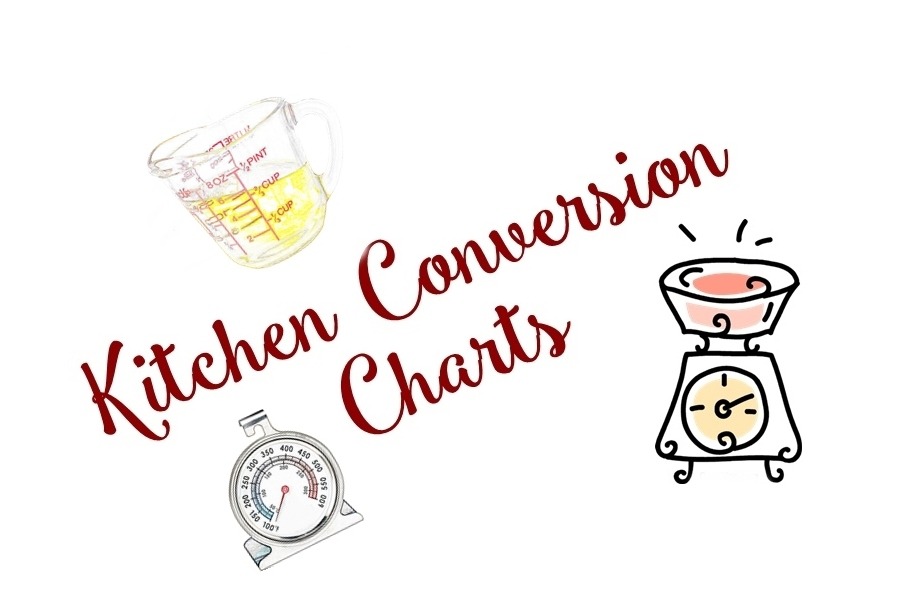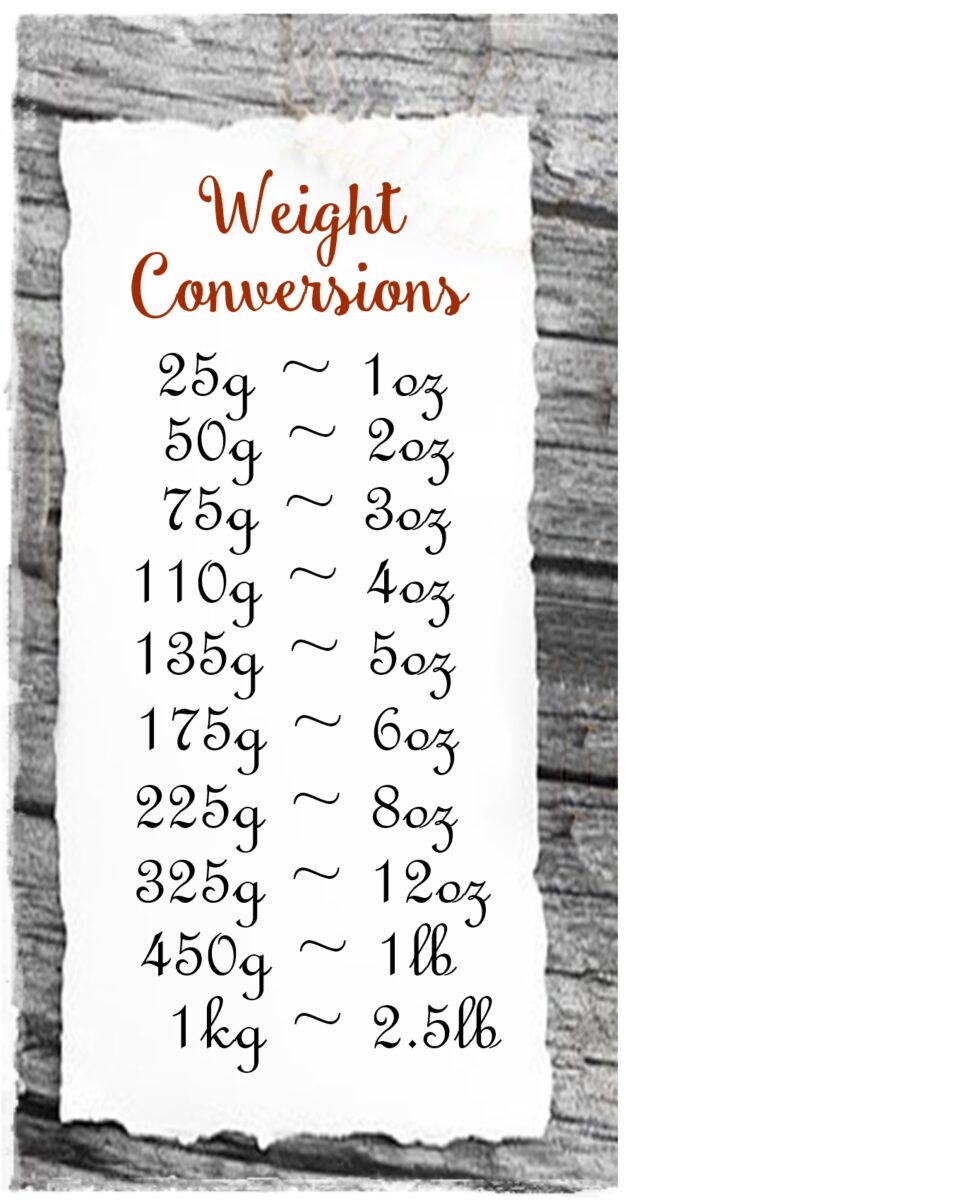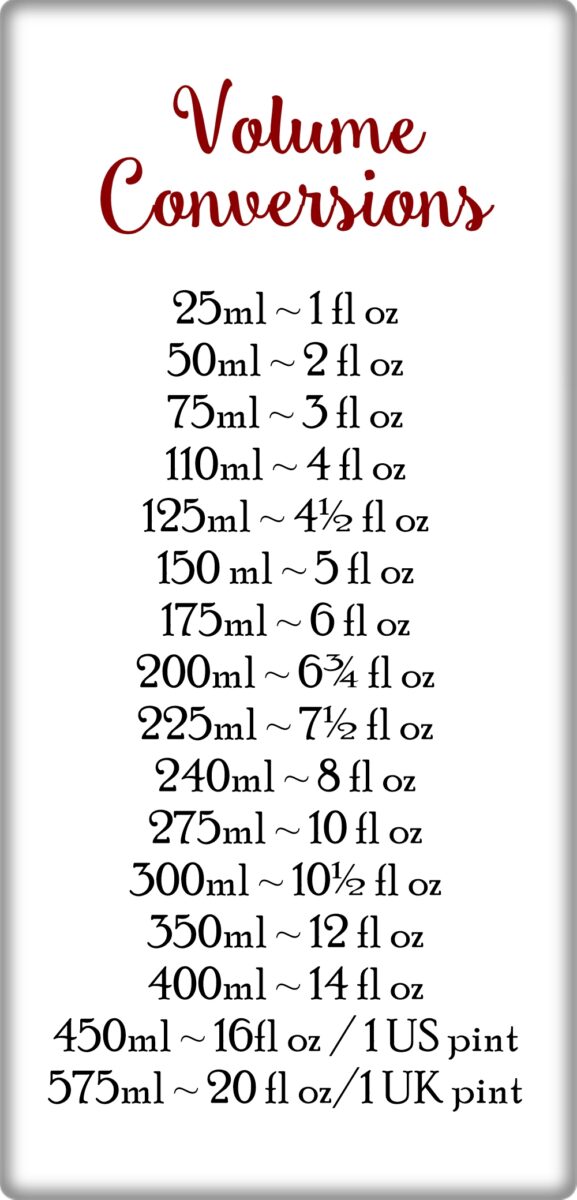
Conversion Charts to Help in the Kitchen
In this post ...
Hopefully these conversion charts will help if you are cooking a recipe using different measurements to those you are used to.

Oven Temperature Conversions
Useful as this chart is I do encourage the use of an oven theremometer too, especially when getting used to a new oven – they seem to vary so very much. I’m always having to lend mine to people whose food isn’t cooking right!

Weight Conversions
A word of advice – use scales, especially when baking because precision is crucial then, but in all cases ounces are more precise than cup measurements and grams are more precise than ounces. If you have a set of digital scales which measure in both Imperial and Metric, then recipes are easy to convert from one scale to another.
Running your eye down this list it is obviously inaccurate; if 25 grams equal 1 ounce how come, for instance, 110 grams equals 4 ounces? Well it’s because 1 ounce actually equals 28.3495 grams so figures have been rounded up, and down, slightly. Not enough to worry about when cooking, though!
Cups and Spoons
Cups and spoons of dry different ingredients convert differently – see here for the converstions you need.

Volume Conversions
A pint in Britain is 20 fluid ounces (575ml) but in America it is only 16 fluid ounces (450m) – bear this in mind when using American recipes (or British if you are in the States!)
Cups and Spoons
1 teaspoon ~ 5ml
1 dessertspoon ~ two teaspoons ~ 10ml
1 tablespoon ~ 3 teaspoons ~ 15ml ~ ½ fl oz
1/4 cup ~ 60ml ~ 2 fl oz
1/2 cup ~ 120ml ~ 4 fl oz
3/4 cup ~ 180ml ~ 6 fl oz
1 cup ~ 240ml ~ 8 fl oz